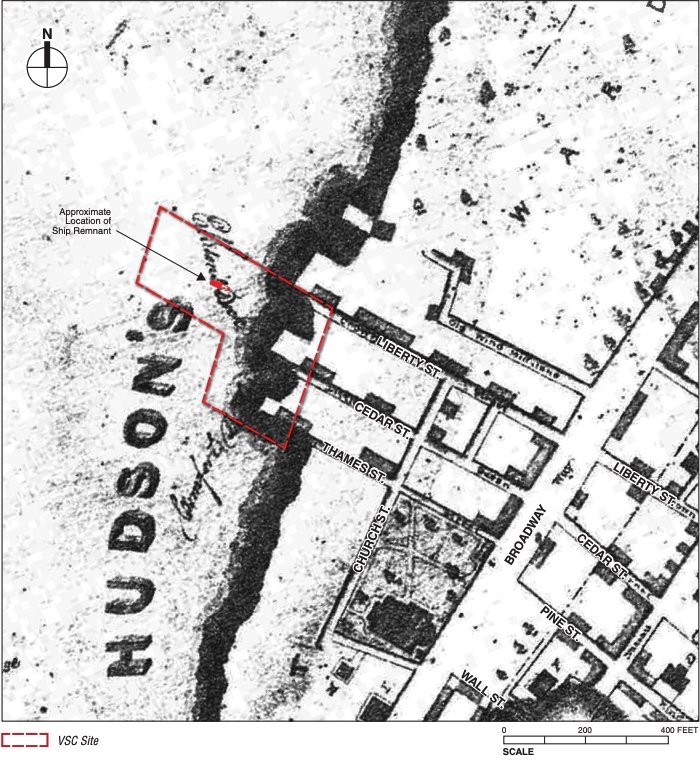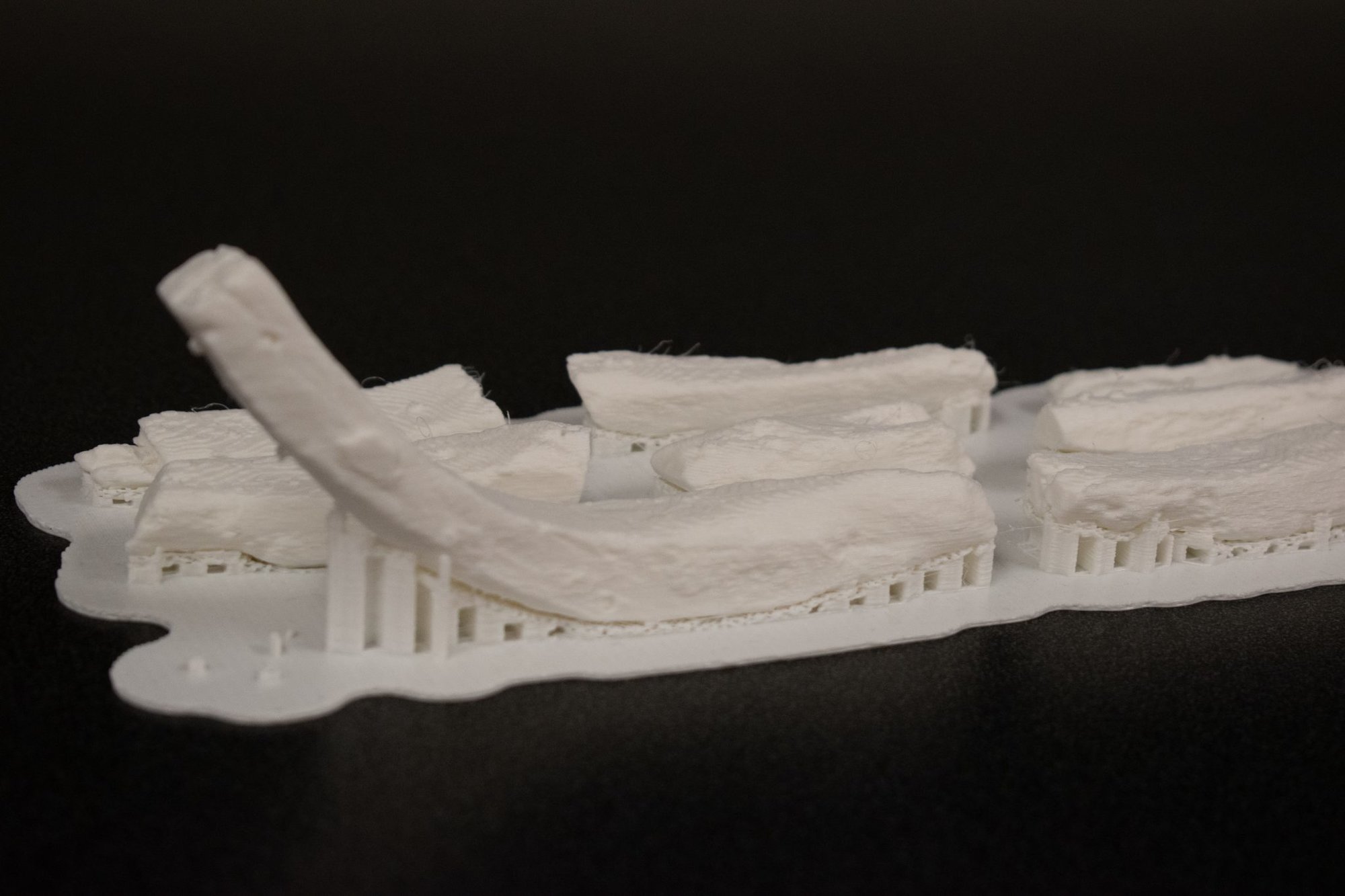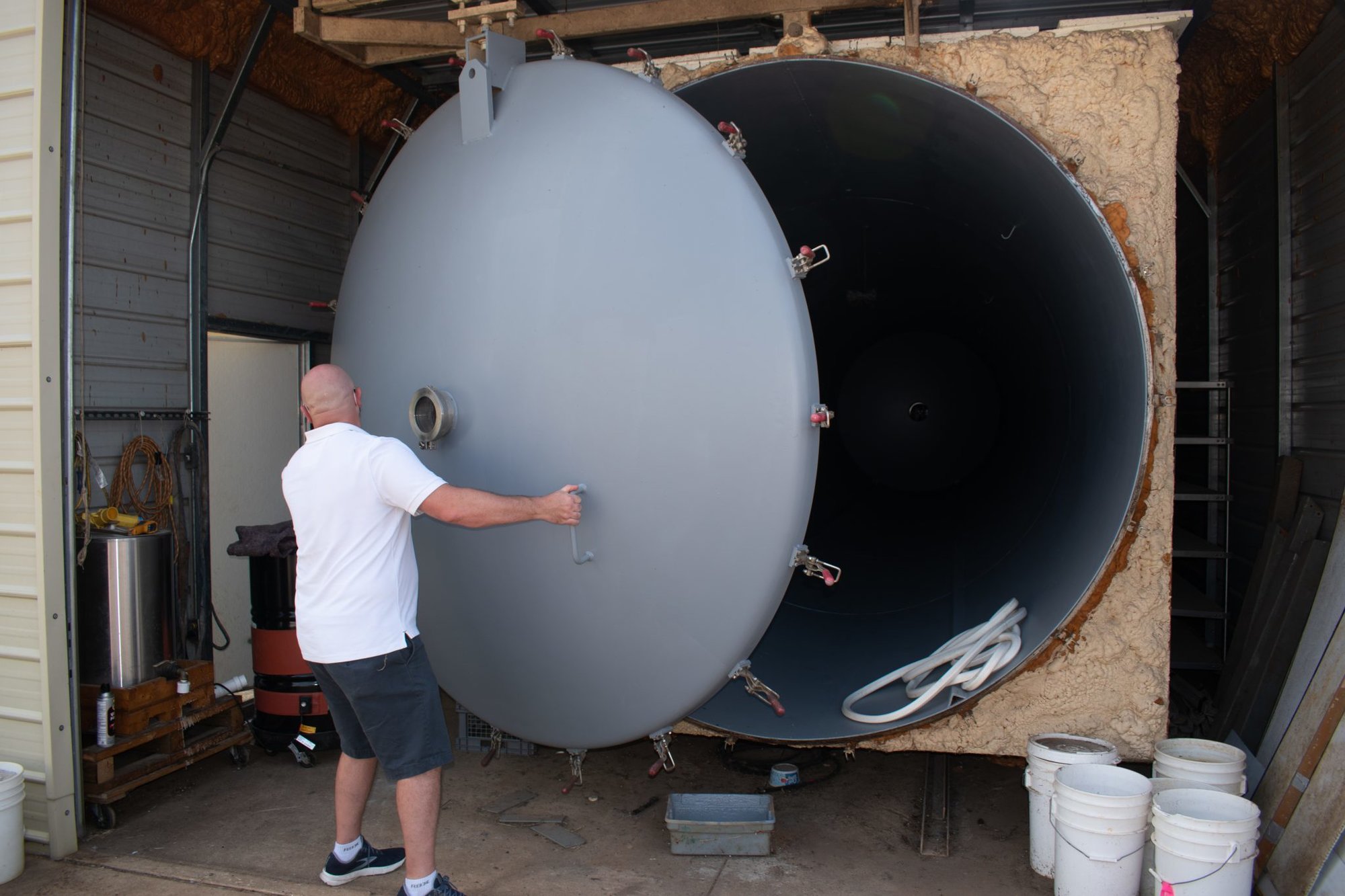How Did a Revolutionary War-Era Ship End Up Under Ground Zero?

Archaeologists and the consulting team that excavated the SS Adrian, nicknamed after their foreman, from the foundations of the World Trade Center in 2010. Top row, from left to right: Drew Fulton, Raymond Hennessy, Rui Reyes, Jackie Madeira, Adolfo Rodrigues, John K., Kathleen Galligan, Joaquim “Adrian” Medeiros, Elizabeth D. Meade, and Christian Thompson. Bottom row, left to right: Diane Dallal, Claudia Cooney, Tony Zandirad, Caitlin Shaffer, Carrie Atkins Fulton, and Nichole Doub. Seated, left to right: Warren Riess, A. Michael Pappalardo, and Molly McDonald. Photo courtesy of the Lower Manhattan Development Corp.
New York City hosts many strange things. Perhaps one of the more remarkable discoveries was the shipwreck of a Revolutionary War-era vessel excavated from under the foundations of the World Trade Center at ground zero.
Ten years after 9/11, while excavating about 20 to 30 feet below street level at the site where the twin towers collapsed, archaeologists from the engineering consulting firm AKRF recognized what appeared to be the stern of a ship protruding from the earth. At the time, construction work was ongoing to create a vehicular security center on the 56th block of lower Manhattan, previously home to the World Trade Center.
Using dendrochronology — the science of studying tree rings — investigators determined that the ship was built sometime between 1770 and 1780, but that it likely joined the 1790 refuse pile that, by 1818, had formed the Manhattan shoreline.

Archaeologists involved in the excavation concluded that “years of hard use, frequent repairs, and significant shipworm infestation resulted in a shortened functional lifespan for the vessel.”
“It’s likely not a Hudson River sloop,” Texas A&M University nautical archaeologist Christopher Dostal told Coffee or Die Magazine, referencing the original conclusion. “We aren’t entirely sure what it is yet. But that’s the beauty of archaeology — there’s always room for interpretation.”
Dostal, a US Navy veteran who served for six years aboard the fast-attack submarine USS Connecticut, added that the unearthed ship likely never operated on the high seas. He added that timbers were sometimes recycled in ship construction during that era of history — meaning the Caribbean shipworms could have come from a different vessel that was deconstructed and used for parts.

Preserving and studying shipwrecks is Dostal’s specialty. He pieced together the timbers of the World Trade Center vessel using laser scanning technology as if solving a highly complex jigsaw puzzle. During a visit to his laboratory at Texas A&M University, Dostal showed Coffee or Die a 3D model of the entire ship unearthed at ground zero.
After archaeologists uncover a wooden shipwreck, the ensuing investigation typically becomes a race against time as exposed timbers dry. The cellular structure of the wood rapidly disintegrates when moisture in it no longer acts as a glue. To counteract this deterioration, conservationists use a petroleum product called polyethylene glycol (PEG) to replace the original substance keeping the wood together — a process similar to how sustained blood flow keeps blood vessels from collapsing. PEG also was used to preserve the Vasa, a famous Viking shipwreck in Sweden.
However, conservationists were unable to use PEG to preserve the ground zero wreck because the ship was built with iron fasteners — if mixed, PEG and iron create a destructive acid. Instead, Texas A&M conservationists opted for a freeze-drying sublimation process. Sublimation is a method of using high pressure to convert material from a solid state, usually frozen, to a vapor state, skipping the intermediate liquid stage entirely. Due to its precision, this method creates beautifully preserved organic artifacts and can also be used in taxidermy to preserve the internal organs of animals.

On Texas A&M’s RELLIS campus, a former World War II Army air base where the Conservation Research Laboratory is located, Dostal revealed a $1.5 million “cost-saving measure,” meant to offset PEG’s high price tag.
Measuring some 40 feet in length and 8 feet in diameter, the colossal freeze-dryer allows Texas A&M scientists to preserve organic material. The device could prove helpful in emergency conservation cases, Dostal explained, potentially offering a place to store sensitive artifacts after a damaging hurricane.
Outside of the freeze-dryer shed, the old Army air base is a beehive of unusual activity. A military explosive ordnance disposal unit uses the area to test and destroy explosives. And a crash test lab conducts experiments on an obsolete runway.

“Sometimes we take a break and come outside to watch the crash test guys drive a school bus into a concrete wall or the EOD guys blow something up,” Dostal said. “It’s great.”
After hundreds of years, sea life and sediment tend to build up on iron artifacts such as cannons. This accumulation creates “concretions,” or large lumps of general sea junk. During the preservation process, these items must be removed. The artifact is placed in a special bath of solution and hooked up to a large battery so that an electric charge can remove the concretions in a process called electrolytic reduction.
In his Texas lab, Dostal also highlighted a simmering vat full of black ooze. Dostal is using the substance, which is a molten microcrystalline wax, on 9,000-pound cast-iron cannons — from a separate wreck — as a protective sealant, over which he will apply an epoxy paint topcoat. The cannons are slated for outdoor display in St. Augustine, Florida.

“This is a really dirty job,” Dostal said. “Things that are wet and old tend to be dirty.
“You might spend hours getting crud out of your hair or beard in the shower after cleaning up an artifact all day, only to watch the guys at the museum pick that thing up wearing white gloves and gingerly moving it [for display].”
Thousands of items were ultimately pulled from the ground zero excavation. Artifacts found on the old vessel included birdshot and leather shoes. However, since the ship was found in an old landfill, it’s hard to tell what items originated aboard the vessel. Investigators are still uncertain about the ship’s original purpose and design.
Dostal is using the digital model to estimate the ship’s intact appearance. That hypothesis is created by extrapolating from the angles of the ship’s lower beams and the layout of its timbers. When the conservation process is complete, Texas A&M will transfer the ship and all of its artifacts to the New York State Museum in Albany.
Read Next:

Lauren Coontz is a former staff writer for Coffee or Die Magazine. Beaches are preferred, but Lauren calls the Rocky Mountains of Utah home. You can usually find her in an art museum, at an archaeology site, or checking out local nightlife like drag shows and cocktail bars (gin is key). A student of history, Lauren is an Army veteran who worked all over the world and loves to travel to see the old stuff the history books only give a sentence to. She likes medium roast coffee and sometimes, like a sinner, adds sweet cream to it.
BRCC and Bad Moon Print Press team up for an exclusive, limited-edition T-shirt design!
BRCC partners with Team Room Design for an exclusive T-shirt release!
Thirty Seconds Out has partnered with BRCC for an exclusive shirt design invoking the God of Winter.
Lucas O'Hara of Grizzly Forge has teamed up with BRCC for a badass, exclusive Shirt Club T-shirt design featuring his most popular knife and tiomahawk.
Coffee or Die sits down with one of the graphic designers behind Black Rifle Coffee's signature look and vibe.
Biden will award the Medal of Honor to a Vietnam War Army helicopter pilot who risked his life to save a reconnaissance team from almost certain death.
Ever wonder how much Jack Mandaville would f*ck sh*t up if he went back in time? The American Revolution didn't even see him coming.
A nearly 200-year-old West Point time capsule that at first appeared to yield little more than dust contains hidden treasure, the US Military Academy said.












